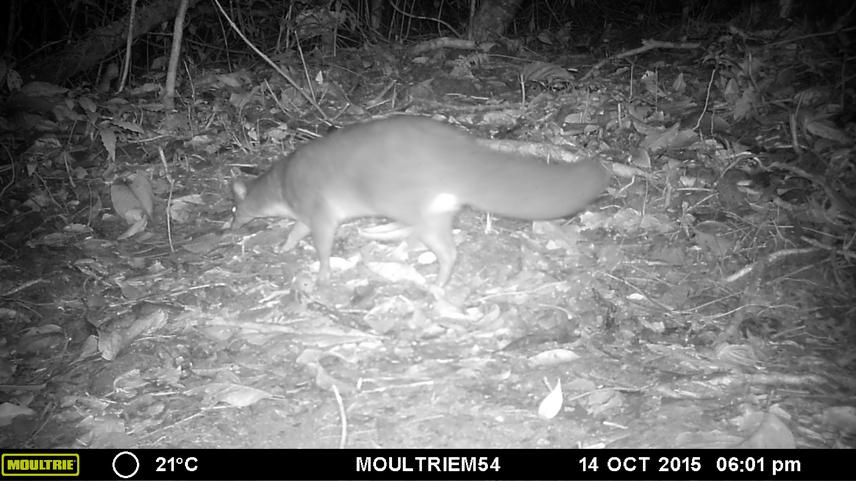Fidisoa Rasambainarivo
I aim to evaluate the potential for disease transmission between introduced and endemic animals within and around the Betampona natural reserve, Madagascar

A Falanouc (Eupleres goudotii), a species that was not known to occur in the Betampona Natural Reserve and captured on camera traps
Research in different ecosystems including Madagascar has shown a decline in endemic wildlife populations associated with the occurrence of domestic carnivores. The reason for this correlation may be any or a combination of interspecific competition, predation and disease. In fact, infectious diseases may be a factor of apparent competition and affect the distribution and abundance of two co-occurring species. Diseases are increasingly recognized as threats to endangered populations of wildlife and may lead small and isolated populations to extinction. This is especially true when pathogens are maintained in domestic animal populations and spill over to native species. With this project, I aim to evaluate the impact of introduced carnivores such as dogs and cats on endemic wildlife and more specifically, the potential for disease transmission between introduced and endemic carnivore species within and around the Betampona natural reserve, Madagascar.
First, I will describe the spatio-temporal interactions between carnivore species using GPS collars, radio tracking and a camera trapping survey to monitor land-use sharing between species and characterize the probabilities of co-occurrence and detection of domestic and endemic wildlife in the BNR ecosystem.
Secondly, I will estimate the prevalence and identify risk factors for exposure to selected pathogens in introduced animal species in villages as well as endemic terrestrial mammals within the Betampona natural reserve.
Finally, using microbial genetics, I will investigate the structure of the transmission network for directly or environmentally transmitted agents to identify species or individuals that may act as “super spreaders”. This study will provide information that can be used to minimize the transmission of diseases between animals at the domestic animal and wildlife interface.